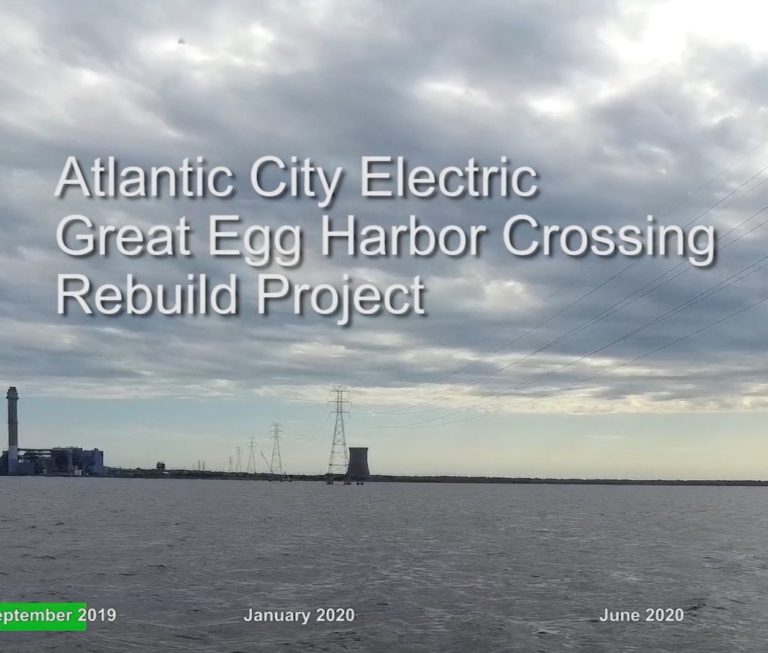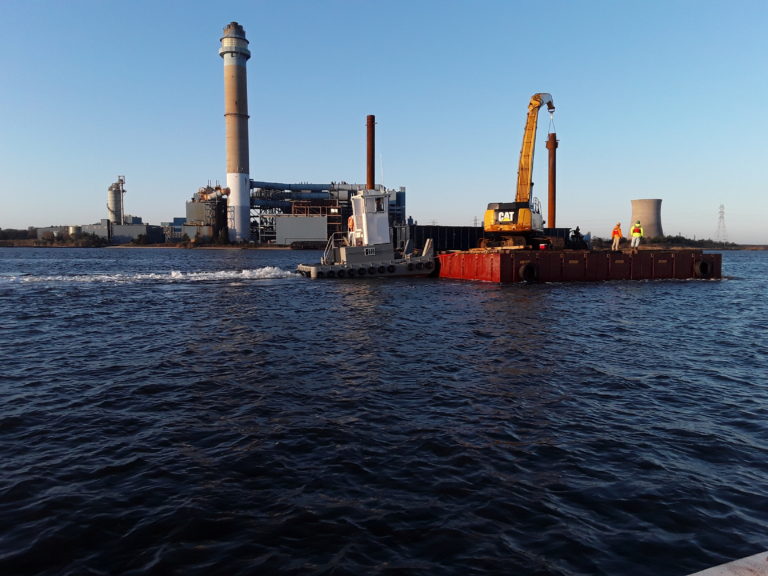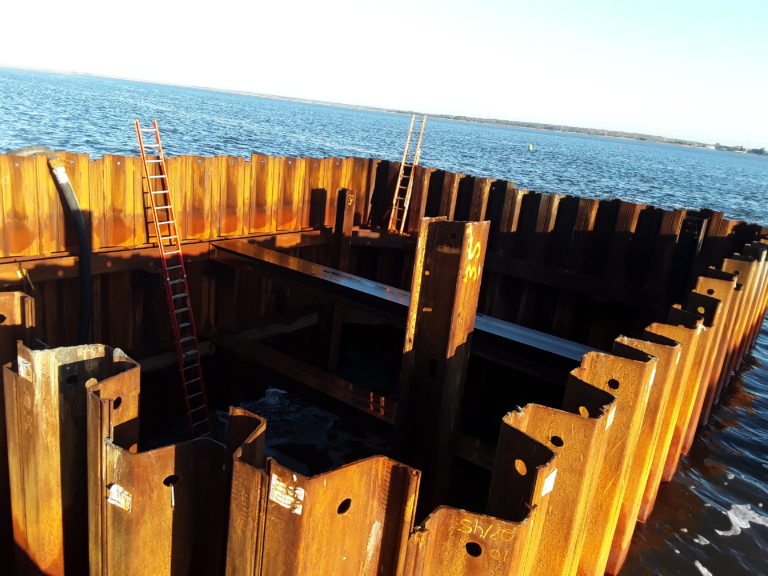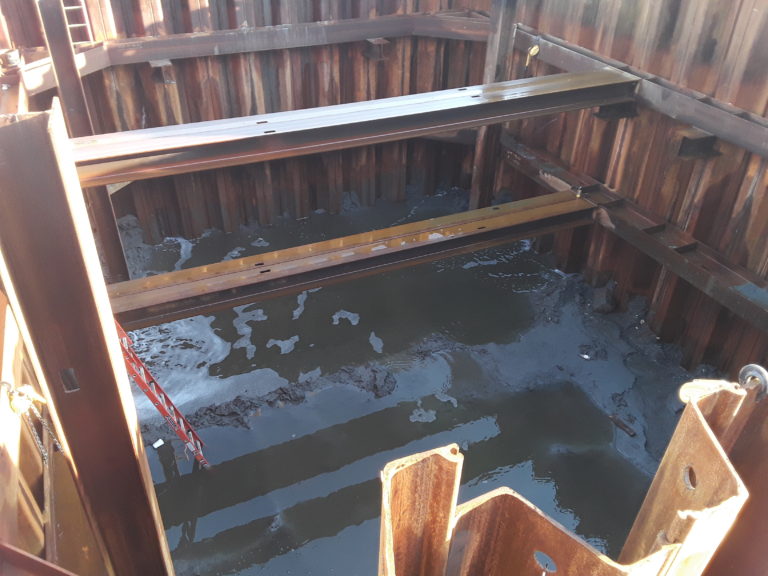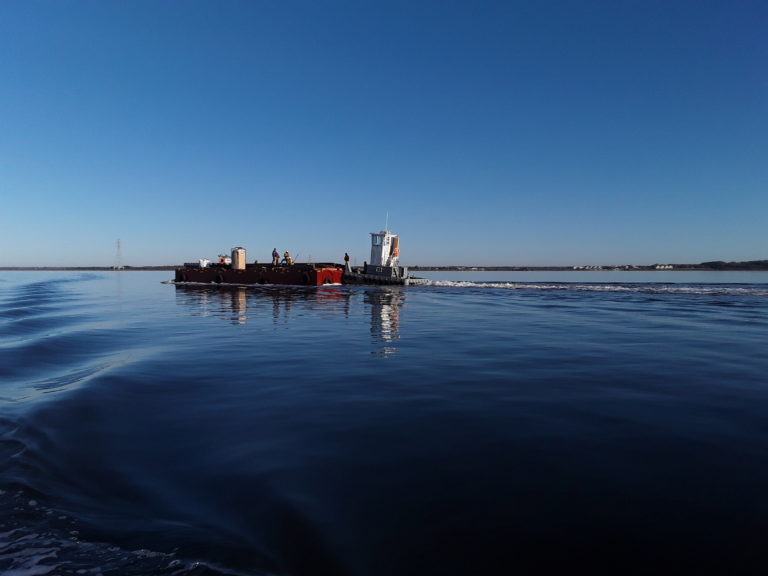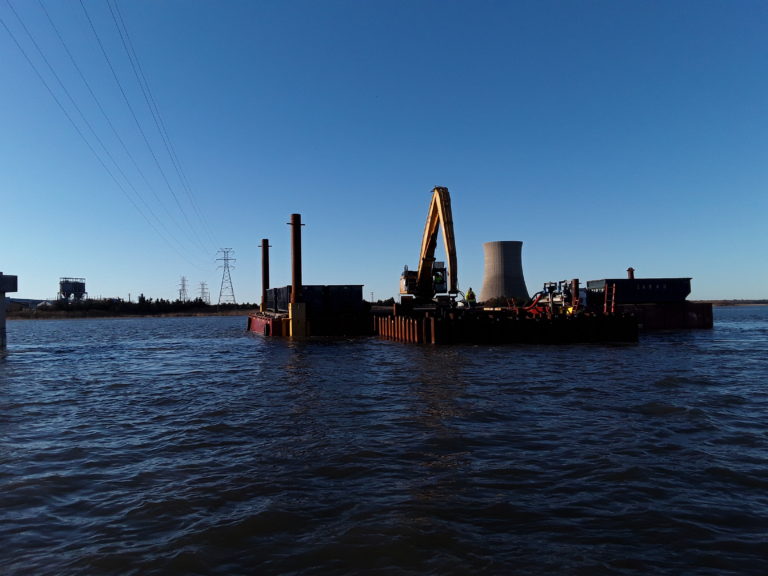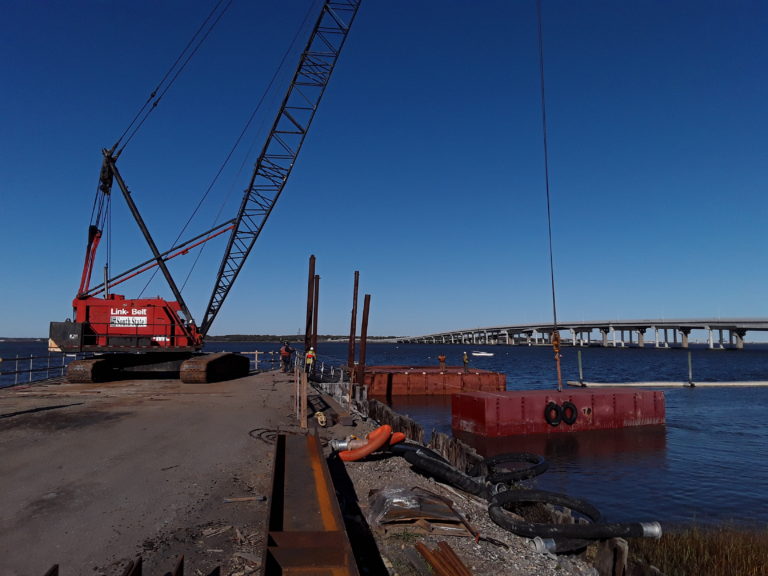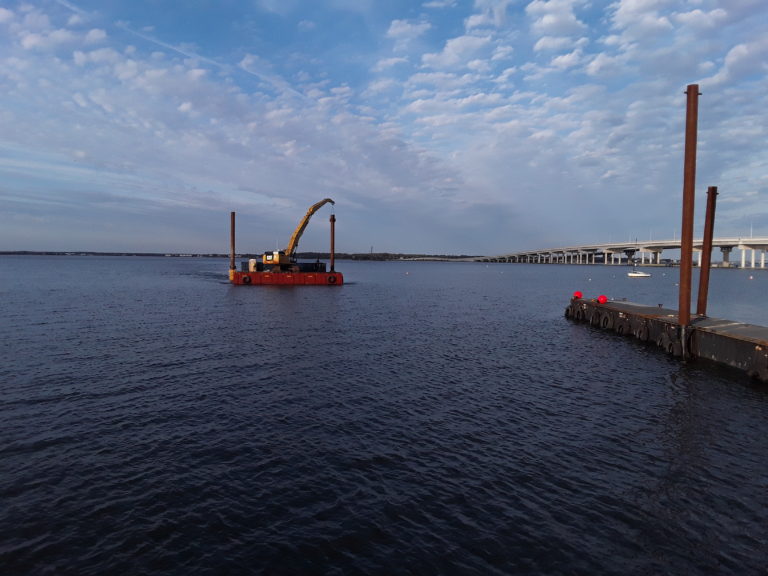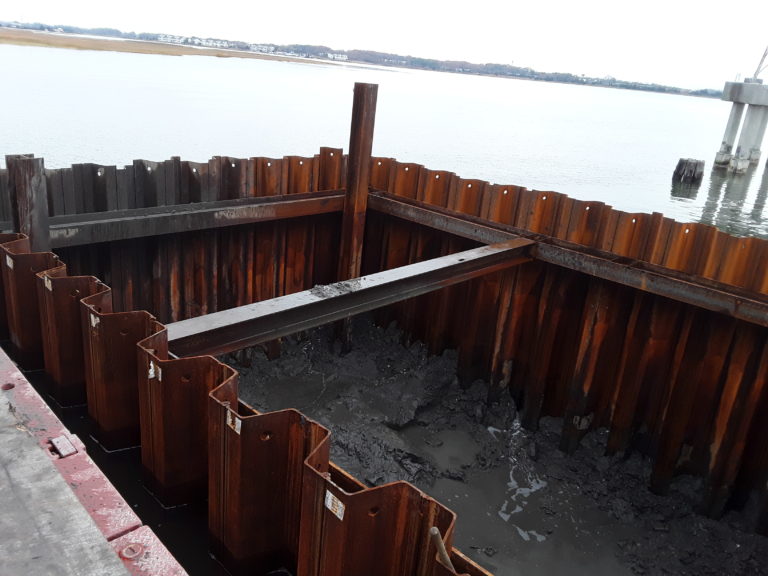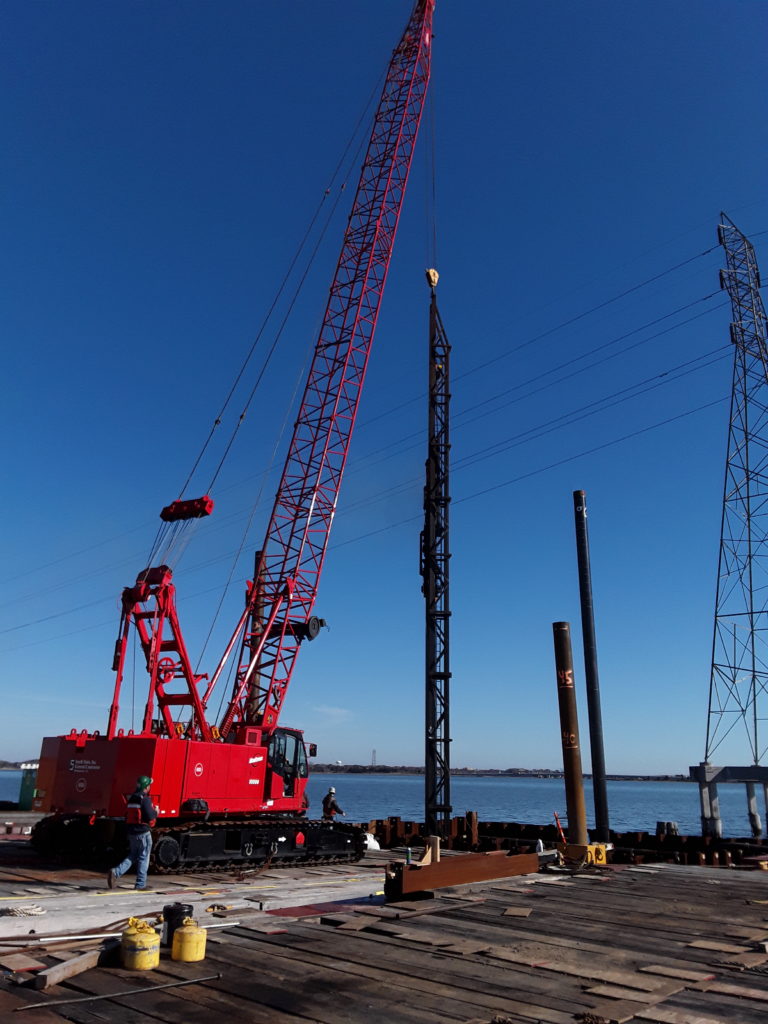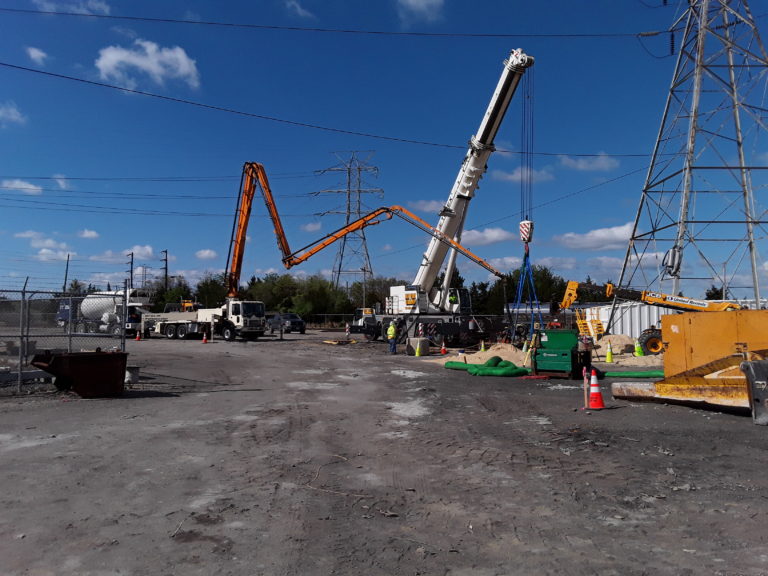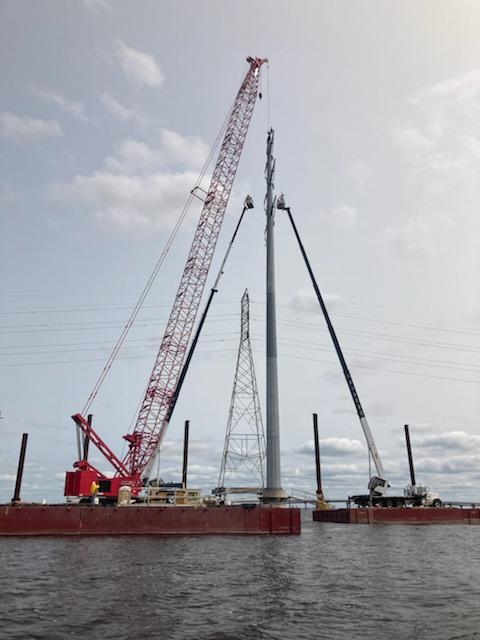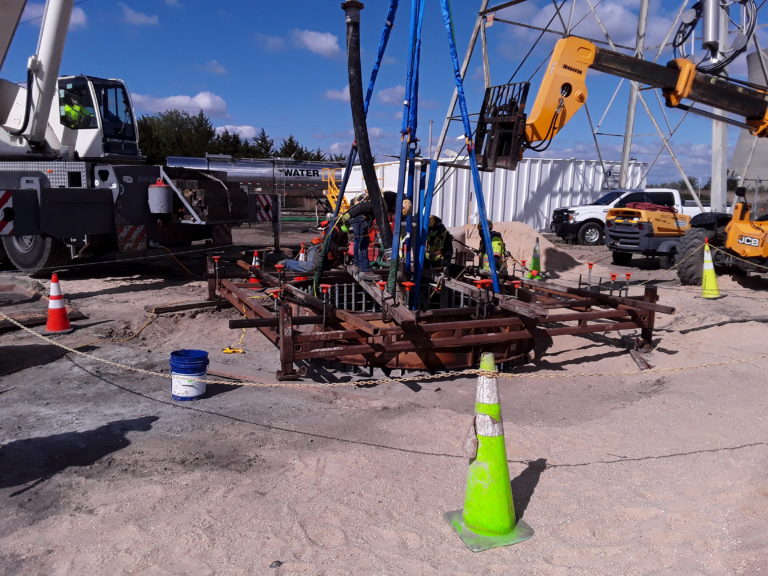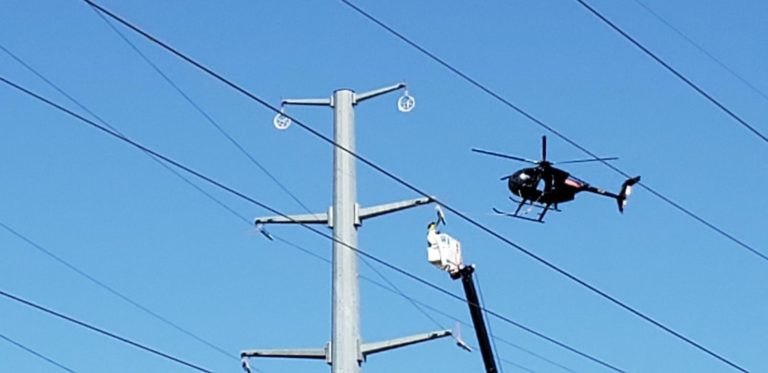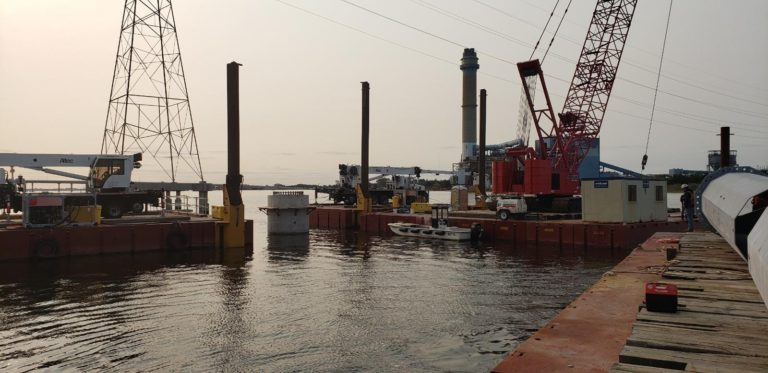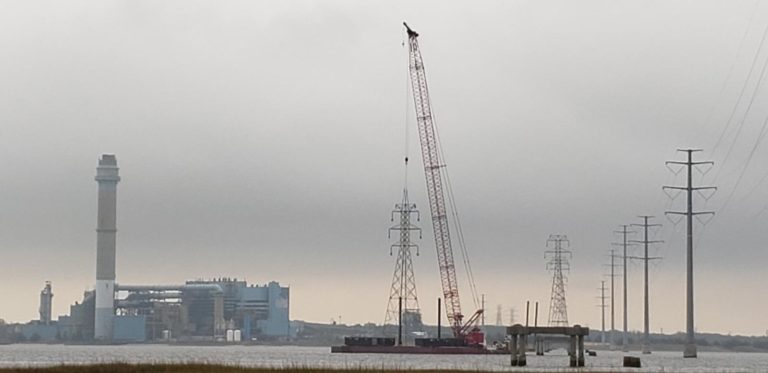Project Challenge
- A majority of the water based work was effected by tide cycles. Continuous, extensive planning was executed to ensure tides allowed the proper draft for boats and barges for certain tasks and activities. Any missed opportunity could have caused a 24-hour project delay.
- Stringent environmental laws limited in-water work to 4 months (Sept-Dec) out of the year.
- The new land-based towers are in environmentally protected areas. Extensive action was taken at each location to ensure the locations remained undisturbed. This action included the installation of environmental matting, silt socks, silt fence, daily inspections, etc.
Work Performed
Due to stringent environmental laws which limit in-water work to September-December each year, a consolidated effort was made to install all required cofferdams and work platforms so that work could continue beyond the in-water work restrictions. Once all cofferdams were installed, the new tower locations were excavated and stoned. From there pipe piles were driven, rebar installed, and foundations were poured to support the new towers. The monopole structures were set in sections with a crane, and boom trucks with man baskets were utilized for access. Sectional barges were used for access for all equipment at the water-based towers.
The land-based towers were drilled for excavation, rebar installed, and concrete poured. Once all water-based towers were set and the land-based foundations were cured, the owner initiated a transmission outage, permitting removal of the existing and installation of the new conductor/OPGW. Due to the difficult access over water and through protected areas, helicopters were employed to support the conductor and OPGW installation. Extensive planning and coordination lead way to way to a successful project with required milestones met within the available power outage.
Once new construction was complete, all existing towers and foundations were removed.
Project Gallery
Project Owner:
Atlantic City Electric
Location:
Great Egg Harbor Bay
Contract Value:
$25,739,500
Project Scope
- Install 5 pile cap foundations within Great Egg Harbor Bay (install cofferdams, dewater, excavate, drive foundation piles, install rebar, form and pour)
- Install 3 foundation piers on land
- Assemble and install 8 transmission towers on new foundations
- Install new transmission conductor and tie-in
- Demo existing conductor, towers, and foundations

